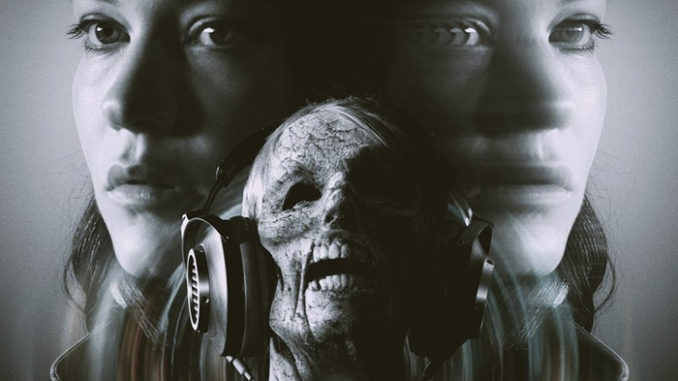
The world of horror film distribution is widening, folks, with lots of rad production houses and streaming services eagerly snatching up the best spook stories from all over the world and making them exceedingly accessible to the masses. Definitely at the pinnacle of the game is Shudder, the genre streaming service that has been killing it this year not only with its respectable streaming library of great exclusives but also with the quality of its own original content.
Just last month, the service added to its roster of 2018 bangers with the release of Deadwax—not a film but rather an eight-part episodic series that explores a sinister mystery about a deadly record, set within the world of ultra-rare record collecting. The series was written and directed by Graham Reznick, who you might know for his excellent sound design work for films like The Innkeepers (2011) and many others, or even for his writing work in the horror video game franchise Until Dawn.
Recently, we had a chance to talk with Reznick and learn more about his philosophy around the importance of sound in film and about the making of the first season of Deadwax.
You famously grew up with fellow director Ti West and have collaborated with him, doing the sound design for some his best films, like The House of the Devil (2009) and The Innkeepers. I’ve read before how important it is to you, when you’re doing a film’s sound design, to work closely with the director as more of a partner than an extraneous piece of the puzzle. What does that relationship and process look like?
Ti and and I have known each other since kindergarten! It’s strange (but great) to work with someone you’ve known for so long—it doesn’t feel like work because we have a good sense of each other’s tastes, which makes the creative process really effortless. He’ll create a scene or a sequence dependent on sound design (like the microphone/ghost hunting scenes in The Innkeepers), and it’s usually pretty clear to me what he’s looking for. There’s not a lot of guesswork, which is amazing.
I try only to take sound design jobs where I have (or think I’ll have) a very good creative, collaborative relationship with the director. For me, sound design is as essential to the filmmaking process as any other element, and I want to make sure we get to explore every possibility of that. So starting off working with Ti was great because it helped build a precedent for that kind of collaboration.
I was fortunate in that enough folks saw those films that it created opportunities to work that way with other directors—who were friends also, like Larry Fessenden, Jim Mickle, Glenn McQuaid, Jim McKenney, etc.—and I got to learn so much from each director along the way.
You mentioned Larry Fessenden, who you’ve worked with a lot in the past. He produced The Roost, Ti’s first film and a film that you did in the sound design for, and you two also co-wrote the script for the excellent 2015 horror adventure video game Until Dawn. What was that writing process like? How did this kind of writing differ from that for film/TV?
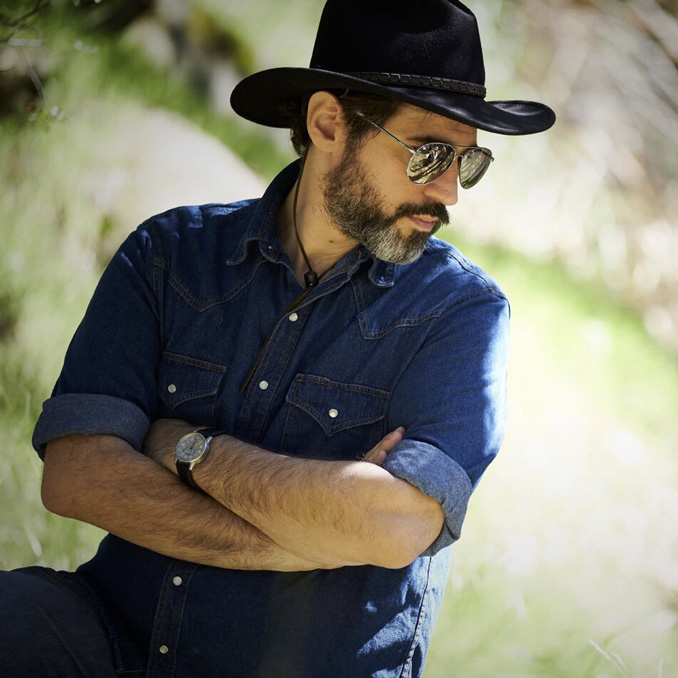
Working with Larry has always been a fantastic experience, and on Until Dawn, we got to explore new narrative territory together and figure out new ways to accomplish old ideas, which was super fulfilling and educational. We were primarily dialogue writers, doing scene work and character development, and working in collaboration with Supermassive (the developers) on the story side as they laid out branching pathways that we had to figure out how to adapt the characters arcs into. It was a challenge! …And a lot of pages!
Unlike film or TV, we always had to consider the player as an active participant in the “writing” process of the character arcs. The developers would create opportunities for players to explore, in terms of how they wanted their characters to develop, and then Larry and I had to make sure that no matter what they chose, those characters would still grow and develop in satisfying (and yet unexpected) ways. We’ve written five games now, and each one has been a new and fascinating experience.
How did you become interested in sound design? Was it something you got into as a younger person or did the interest develop later in film school?
Sound has always felt like a natural component of the process to me—as important as the visuals or the story or the acting, or any other part. Even back in high school, making short films on Mini-DV, sound and music were a huge part of it for me.
In film school, I realized this wasn’t the case for everyone, but I think that’s only because in formal film training, sound is not always taught to be at the forefront of the cinematic idea, which is usually focused on story and visual. Which seems crazy, since it’s literally 50% of the experience!
I never expected to do sound design as a job, but because I’d done it for my own films and was friends with a lot of directors, it made sense for my friends to ask me to work on their films, which I was happy to do. I think things have changed a bit from when I was in school, which was really the beginning of the computer editing era—at least, I hope it has. It used to be really difficult to edit sound for film—analog tape is great for music but analog tape for film editing is Pure Hell—but that’s just not the case anymore.
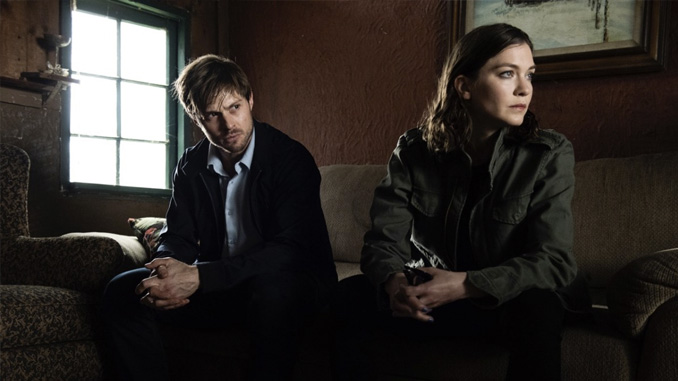
Have you always been interested in the horror genre? What drew you into it? What are the films and who are the directors that inspire you the most?
I’ve always really loved horror because it’s a genre of extreme emotion, and I like seeing art pushed to its limits, though I wouldn’t necessarily call myself solely a genre fan. I tend to veer more toward Lynch, Nic Roeg, Andrej Zulawski, Cronenberg—directors who direct horrors films that aren’t totally horror films. One thing that these directors do in spades is transport the audience to a new place, to make them feel something new and unexpected. That’s the main thing that I want to accomplish in any narrative I’m creating, and the main thing I love in any narrative I’m watching or reading.
But then, take a director like Carpenter, who, on the surface, directs straight “Horror Movies.” But it’s just a ploy to get you in the door, to make you feel comfortable, before he pulls the rug out from under you and gives you Prince of Darkness—one of the greatest weird art films I’ve ever seen. That’s the ideal for me, to give the audience a clean entry point and then show them they’ve been transported to somewhere entirely unrecognizable and absolutely thrilling.
Did you have specific inspiration behind Deadwax?
There are some very easy ones to mention, all of which were part of the original pitch. I pitched Deadwax as a hybrid between John Carpenter’s Cigarette Burns, The Ninth Gate, The Ring, and High Fidelity by way of Kiss Me Deadly. Hopefully, it reminds people, conceptually, of any or all of those films but then takes them to a new and unexpected place.
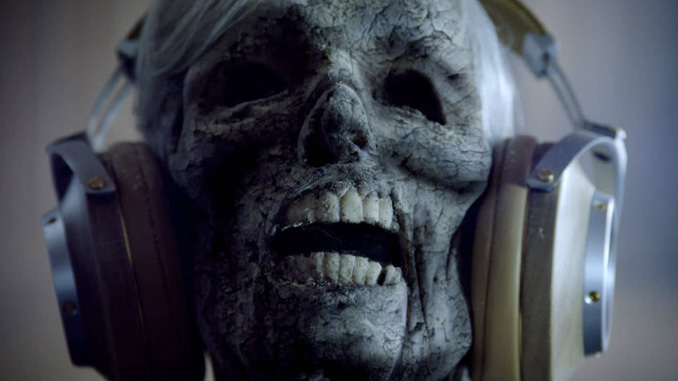
Fittingly, sound is a major component of Deadwax, not only as a component of the filmmaking but in regard to the story itself. Are you a record collector yourself? What’s your relationship with vinyl?
I’m a big record collector. Not as serious about it as some people, but it’s definitely an obsession. I can’t tell you how many records I have exactly, but it’s easily over 1,000. Maybe 2,000—which isn’t even that much compared to other folks I know.
I started by obsessing over my dad’s collection and then in high school and college in the ‘90s and 2000s, I bought a ton of used vinyl when it was super cheap, filling out most of the main stuff I was interested in. It’s a little harder now because prices have gone up.
I haven’t delved too deeply into the world of rare record collecting because it’s a little daunting, financially, but I’m completely fascinated by it. And I do love looking for different pressings of records I like because there really is a quantifiable, sometimes shocking, difference in audio quality. I don’t get too obsessive over the packaging or art or color or any of the physical elements—I get obsessive over hearing the best quality pressing I can find.
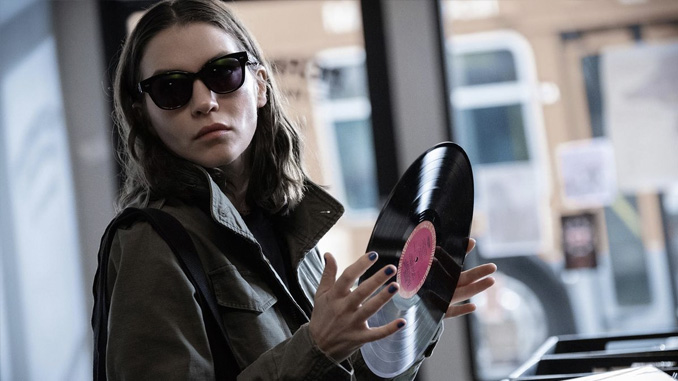
I thought the presentation of Deadwax was very interesting, insofar as it’s a feature-length story broken into short episodes presented as a show. What inspired you to do it that way instead of as a standard feature-length film?
The format was something presented to me by Shudder, and I pitched Deadwax as a possible fit. Since I knew it would be roughly the length of a film, I had a good starting point for how to approach the overall story, and then I had to figure out how to create eight distinct arcs within that.
It was fun, and it taught me a lot about serial storytelling. In a film, you never think about whether the audience is going to stop watching. But in Deadwax, there are seven distinct points at which the audience can leave and never come back.
What was the most challenging part of making Deadwax?
We shot Deadwax in 15 days for a very low budget compared to most television (though fairly typical for ultra-low-budget indie film). Probably the biggest challenge for me was working so quickly, and making sure everything we shot worked—there was very little room for error.
Luckily, we had an insanely good cast who were all super dedicated to nailing their performances and characters. Hannah and Evan (Etta and Perry) were both a delight and it was amazing to work both them and the rest of the cast. And our crew was ridiculously overqualified—we wouldn’t have been able to make a single day if they weren’t all so on the ball.
What are you working on next?
I wish I could say more specifically, but I have a film project that will hopefully shoot next spring. A lot of projects in development, and possibly more music if I can find the time. The Deadwax OST should be out on vinyl soon as well!
Oh, and I have a short film as part of Beck Underwood/Glass Eye Pix’s “Creepy Christmas” online advent calendar film fest. Lots of great directors and shorts will be going up, one per day, all month. Look for mine soon!

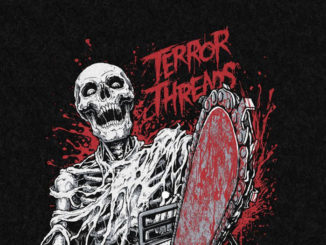
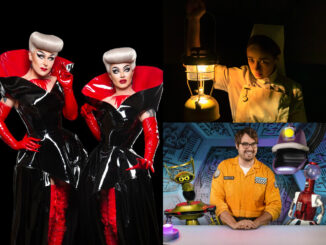
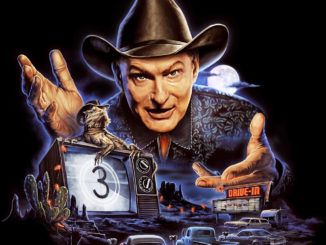
Be the first to comment